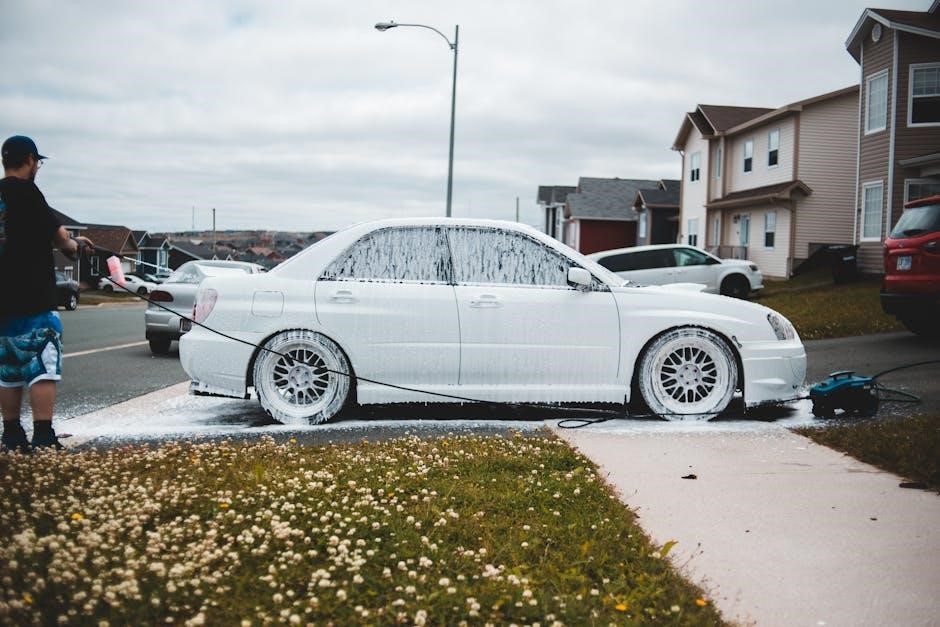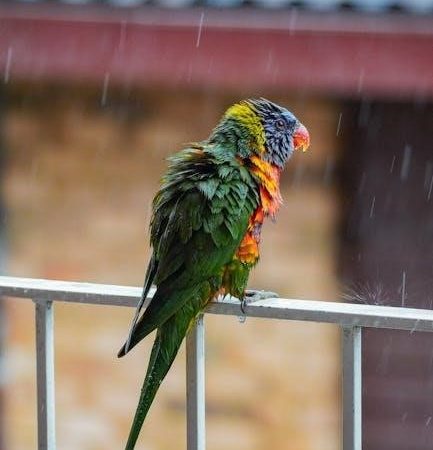1.1 Product Overview
The Ryobi 2700 PSI Pressure Washer is a powerful, gas-powered cleaning tool designed for efficient outdoor cleaning tasks, including driveways, decks, and windows.
1.2 Key Features
Features include a high-efficiency brushless motor, 173cc OHV engine, and 3-year limited warranty, making it ideal for homeowners seeking durable and reliable cleaning performance.
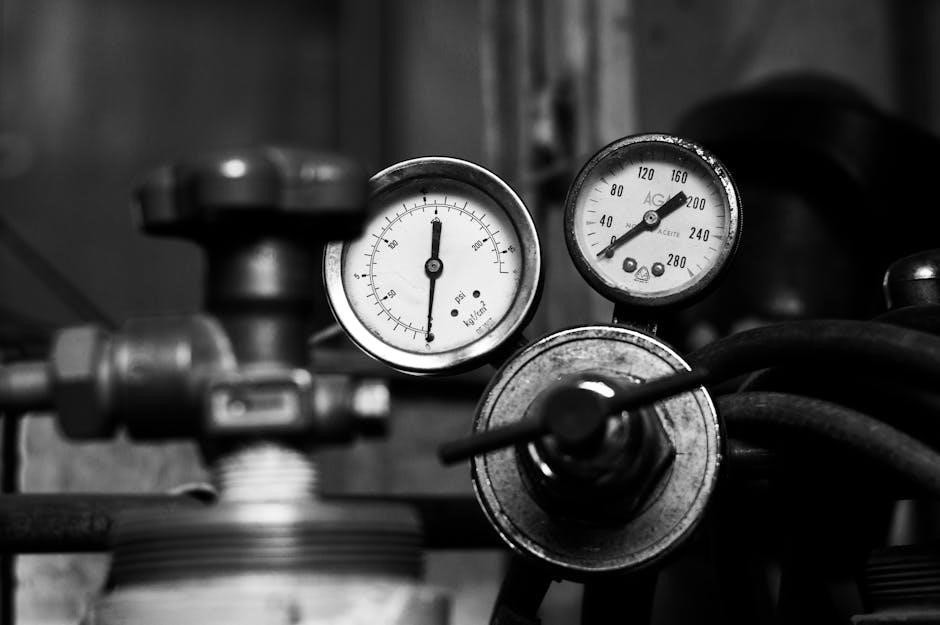
1.3 Technical Specifications
The unit delivers 2700 PSI and 2.3 gallons per minute, providing strong cleaning power for various surfaces, ensuring quick and effective results for all your outdoor cleaning needs.
The Ryobi 2700 PSI Pressure Washer is a high-performance outdoor cleaning tool designed to tackle tough tasks like driveways, decks, and windows. Powered by a robust 173cc OHV gasoline engine, it delivers 2700 pounds per square inch of cleaning power and a flow rate of 2.3 gallons per minute. This unit is ideal for homeowners and professionals seeking efficient and reliable cleaning solutions. With its durable construction and user-friendly design, the Ryobi 2700 PSI Pressure Washer is perfect for maintaining outdoor surfaces. It comes with a comprehensive manual that guides users through assembly, operation, and maintenance, ensuring optimal performance. The pressure washer also features a high-efficiency brushless motor and is covered by a 3-year limited warranty, making it a cost-effective and long-lasting investment for outdoor cleaning needs. Its versatility and power make it a top choice for those looking to keep their property clean and well-maintained.
The Ryobi 2700 PSI Pressure Washer boasts a powerful 173cc OHV gasoline engine, delivering 2700 pounds per square inch of cleaning power and a flow rate of 2.3 gallons per minute. Designed for efficiency and durability, it features a high-efficiency brushless motor for consistent performance. The unit includes a 3-year limited warranty, ensuring long-term reliability. Its user-friendly design allows for easy operation, with an easy-start mechanism and adjustable nozzle for various cleaning tasks. The pressure washer is ideal for outdoor cleaning, tackling surfaces like driveways, decks, and windows with ease. Additionally, it comes with a comprehensive manual that guides users through assembly, operation, and maintenance. This model is praised for its eco-friendly design and cost-effectiveness, making it a top choice for homeowners and professionals seeking a reliable cleaning solution. Its combination of power, versatility, and durability ensures it meets a wide range of cleaning needs effectively.
The Ryobi 2700 PSI Pressure Washer is equipped with a powerful 173cc OHV gasoline engine, delivering a maximum pressure of 2700 PSI and a flow rate of 2.3 GPM. The unit features a durable brushless induction motor for enhanced performance and longevity. Its steel frame construction ensures stability and resistance to harsh environments. The pressure washer includes a 25-foot high-pressure hose, providing extended reach for various cleaning tasks. It also comes with five quick-connect nozzles (15°, 25°, 40°, and soap nozzles) for versatility in cleaning different surfaces. The engine operates on regular gasoline and is designed for low oil consumption. The unit weighs approximately 65 pounds, making it portable yet robust. Dimensions are 23.2 inches in length, 18.5 inches in width, and 34.6 inches in height. These specifications ensure the pressure washer is both powerful and user-friendly, suitable for heavy-duty cleaning applications.

Safety Precautions
Always prioritize safety when using the Ryobi 2700 PSI Pressure Washer. Wear protective eyewear and ensure the area is clear. Avoid open flames and do not operate in wet conditions. Keep children away and read the manual before use.
2.1 General Safety Guidelines
Always read and understand the entire manual before operating the Ryobi 2700 PSI Pressure Washer. Wear appropriate protective gear, including safety glasses and gloves, to prevent injury from debris or high-pressure spray. Ensure the area is clear of obstacles and bystanders, especially children and pets. Avoid using the pressure washer near open flames or sparks, as this could create a fire hazard. Never operate the unit in wet conditions or on slippery surfaces, as this can lead to accidents. Keep the nozzle pointed away from people and animals at all times. Be cautious of electrical components and avoid overreaching, which could cause loss of control. Use only approved accessories and detergents to maintain safety and performance. Always follow the manufacturer’s guidelines to ensure safe and effective operation. Failure to adhere to these precautions may result in injury or damage to the equipment.

2.2 Protective Equipment
Always wear proper protective equipment when operating the Ryobi 2700 PSI Pressure Washer to minimize the risk of injury. Safety glasses or goggles are essential to protect your eyes from debris or high-pressure spray. Wear closed-toe shoes or steel-toe boots to prevent foot injuries from heavy components or accidental drops. Gloves, preferably waterproof, should be worn to maintain a secure grip on the wand and handle, while also protecting your hands from abrasions or cuts. Consider wearing long sleeves and pants to shield your skin from potential spray or flying particles. Additionally, hearing protection may be necessary, as the engine can produce loud noise during operation. Ensure all clothing is snug and secure to avoid entanglement with moving parts; Using the correct protective gear is crucial for safe and effective operation of the pressure washer. Always consult the manual for specific recommendations on approved safety equipment.
2.3 Hazard Warnings
Be aware of the potential hazards associated with the Ryobi 2700 PSI Pressure Washer to ensure safe operation. The high-pressure spray can cause serious injury, including cuts or bruises, if directed at people, animals, or delicate surfaces. Never aim the nozzle at yourself or others, and avoid using the pressure washer near children or pets. The pressure hose and wand can fail if damaged, leading to sudden, uncontrolled spray. Always inspect the equipment for damage before use and replace any worn or damaged parts. Additionally, the engine and pump can become hot during operation, posing a burn risk. Avoid touching these components while the unit is in use or immediately after shutdown. Using unauthorized attachments or modifying the pressure washer can lead to malfunction or increased risk of injury. Always follow the manufacturer’s guidelines and use caution when operating the unit to minimize potential hazards.
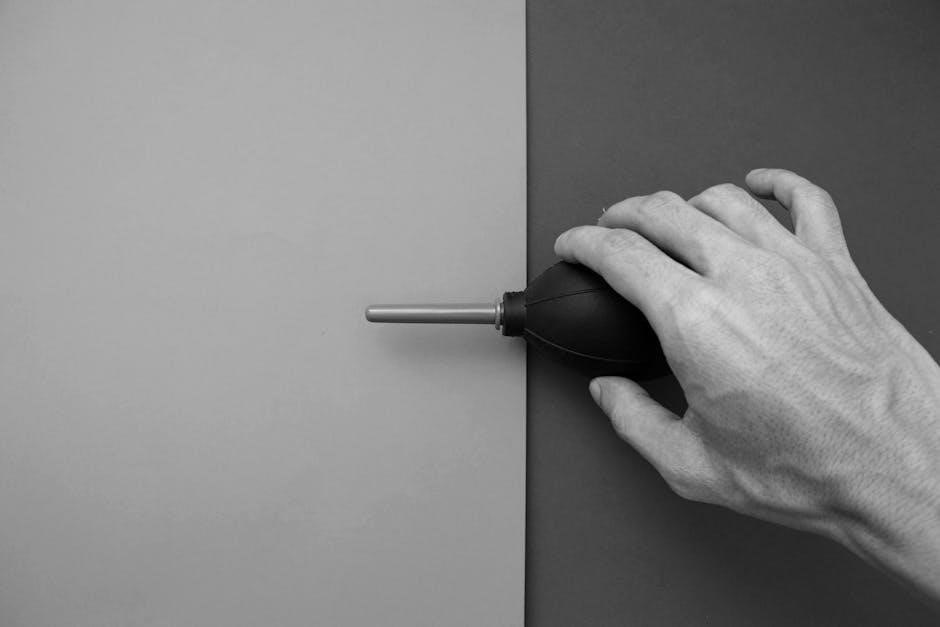
Assembly
Begin by carefully unpacking and inventorying all components to ensure no parts are missing or damaged. Attach the handle securely and connect the hose to the pump, ensuring a tight fit. Proper assembly is crucial for safe and effective operation.
3.1 Unpacking and Inventory
Begin by carefully unpacking the Ryobi 2700 PSI pressure washer to ensure all components are included and undamaged. Check the box for the main unit, hose, nozzle, handle, and any additional accessories. Inspect each part for signs of damage or wear. Compare the contents with the list provided in the manual to confirm everything is accounted for. If any parts are missing or damaged, contact customer support immediately. Organize the components in a clean, dry workspace to avoid misplacement. Familiarize yourself with the parts diagram in the manual to identify each item correctly. Proper inventory ensures a smooth assembly process and prevents delays. Take note of any packaging materials that may be reused for storage or future transportation. Once unpacked, proceed to the next step in the assembly process with confidence.
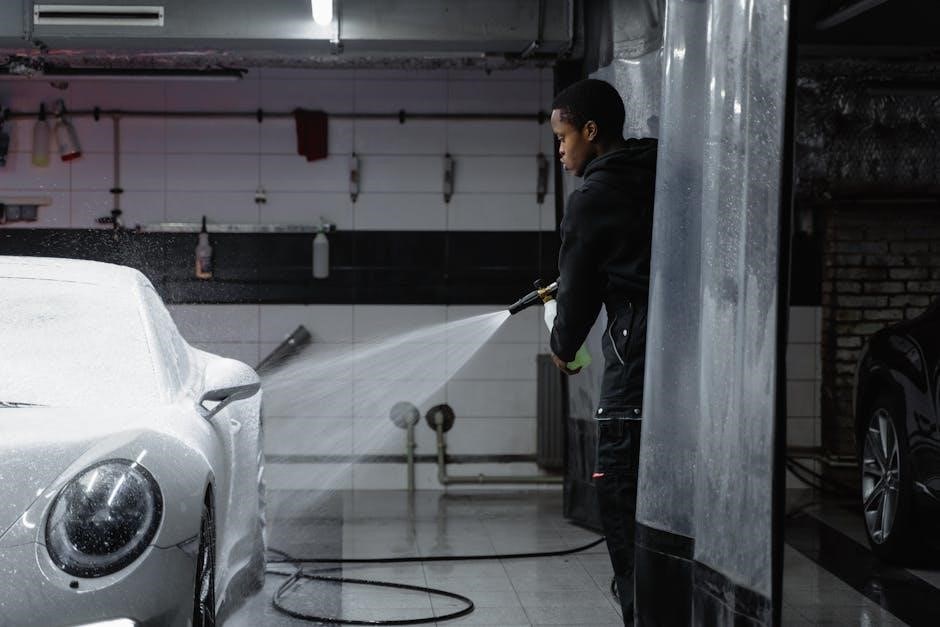
3.2 Initial Setup
After unpacking, begin the initial setup by attaching the handle to the main unit. Ensure it is securely locked into place using the provided hardware. Check the wheels to confirm they are properly attached and functioning smoothly. Next, locate the oil tank and verify the oil level using the dipstick. Add the recommended oil type if necessary, following the guidelines in the manual. Do not overfill. Prime the engine by turning the choke to the “start” position and pulling the recoil rope gently until resistance is felt. Attach the garden hose to the water inlet, ensuring it is securely connected to a water source. Check for any leaks around the connection. Finally, connect the high-pressure hose to both the pressure washer unit and the spray gun. Tighten all connections firmly. Once these steps are completed, the unit is ready for further assembly and use. Follow the manual for specific torque values and connection procedures.
3.3 Hose and Nozzle Setup
Connect the high-pressure hose to the pressure washer unit and the spray gun, ensuring both ends are securely attached. Tighten the connections firmly by hand, then use a wrench to apply an additional quarter-turn for a leak-proof seal. Inspect the hose for any kinks or damage and straighten it if necessary. Attach the desired nozzle to the spray gun by pulling back the collar and twisting the nozzle into place until it clicks. Test the nozzle by spraying water to ensure proper function. For different cleaning tasks, use the appropriate nozzle size (e.g., 25°, 40°, or 60°) for optimal performance. Always use the correct nozzle type to avoid damage to surfaces or the pressure washer. After setup, keep the nozzle clean and free of debris. Store the hose and nozzle properly after use to prevent damage. Refer to the manual for specific nozzle recommendations and safety guidelines.

Operating the Pressure Washer
Always wear safety gear, including gloves and goggles, before starting. Keep the surface clean and clear of debris. Avoid spraying windows, glass, or weak surfaces. Maintain a safe distance from the nozzle. Work in a well-ventilated area to prevent inhaling cleaning agents or fumes. Ensure the area is clear of people and pets. Regularly inspect the hose and connections for leaks or damage. Keep the pressure washer on a stable, level surface during operation. Never aim the nozzle at people or animals. Use the correct nozzle for the task to achieve the best cleaning results. Avoid using the pressure washer in extreme weather conditions, such as heavy rain or lightning storms. If unsure about any operation, refer to the manual or contact customer support for assistance. Properly shut off the engine and relieve pressure before leaving the unit unattended. Store the pressure washer in a dry, secure location after use to prevent theft or damage. Regular maintenance is essential to ensure optimal performance and longevity of the unit. Clean the nozzle and spray gun regularly to prevent clogs and maintain proper function. Follow all safety guidelines and manufacturer recommendations to ensure safe and effective operation. If the pressure washer is not in use for an extended period, drain the fuel tank and store it according to the manual’s instructions. Always use the correct type and amount of detergent recommended by the manufacturer to avoid damaging the unit or the surfaces being cleaned. Keep the pressure washer away from open flames or sparks, as some components may be flammable; If you notice any unusual noise or vibration during operation, stop immediately and inspect for damage or misalignment. Never operate the pressure washer while under the influence of alcohol or drugs. Use the pressure washer only for its intended purpose and avoid modifying it without authorization from the manufacturer. Always follow local regulations and environmental guidelines when using or storing the pressure washer. Properly dispose of any cleaning solutions and wastewater according to local laws. Keep children away from the pressure washer at all times, even when it is not in use. Regularly check and replace worn or damaged parts to maintain performance and safety. If you are unsure about how to perform a specific task, consult the manual or seek professional assistance. Never leave the pressure washer unattended while it is in operation. Always turn off the engine and relieve pressure before performing any maintenance or repairs. Use the pressure washer on a firm, level surface to ensure stability and prevent accidents. Avoid using the pressure washer in areas with poor ventilation, as this can lead to the accumulation of harmful fumes. Keep the pressure washer and its accessories clean and dry to prevent rust and corrosion. If you need to transport the pressure washer, ensure it is properly secured to prevent movement or damage during transit. Always follow the manufacturer’s instructions for loading and unloading the pressure washer from a vehicle. Keep the pressure washer out of reach of children and unauthorized users. Regularly check the oil and fuel levels and top them up as needed to ensure smooth operation. Never operate the pressure washer without the proper protective equipment, as this can lead to serious injury. Use the pressure washer only in well-lit areas to maintain visibility and safety. Avoid using the pressure washer near electrical sources or outlets to prevent the risk of electric shock. Always follow the recommended pressure settings for different surfaces to avoid damage. If you notice any signs of wear or tear on the hose or connections, replace them immediately to prevent leaks or breaks. Use the pressure washer only for cleaning tasks and avoid using it for any other purpose, such as watering plants or washing vehicles. Keep the pressure washer and its components away from extreme temperatures, as this can affect performance and longevity. Always refer to the manual for specific instructions on how to handle different cleaning tasks and surfaces. If you are unsure about the best way to clean a particular surface, consult the manual or contact customer support for guidance. Regularly inspect the pressure washer’s components for any signs of damage or wear and address them promptly to prevent further issues. Use the pressure washer only in accordance with the manufacturer’s instructions and guidelines to ensure safe and effective operation. Always prioritize safety when operating the pressure washer, and take necessary precautions to protect yourself and others in the surrounding area. Keep the pressure washer well-maintained to ensure it continues to perform optimally and lasts for many years. Avoid using the pressure washer in areas where the surface could be damaged by high pressure, such as wooden decks or painted surfaces. Use the correct nozzle and pressure setting for the specific cleaning task to achieve the best results without causing damage. If you need to clean a large area, work in sections to maintain even coverage and avoid missing spots. Always keep the pressure washer’s manual handy for quick reference during operation. If you encounter any issues or have questions, do not hesitate to contact customer support for assistance. Properly store the pressure washer and its accessories after each use to protect them from the elements and prevent damage. Use the pressure washer only on surfaces that are appropriate for high-pressure cleaning, as specified in the manual. Avoid using abrasive cleaners or chemicals that could damage the pressure washer or the surfaces being cleaned. Regularly clean the pressure washer’s filters and screens to ensure proper flow and prevent clogs. If you plan to store the pressure washer for an extended period, follow the manual’s instructions for winterizing to prevent damage from freezing temperatures; Always use the correct fuel type and ratio recommended by the manufacturer to ensure the engine runs smoothly and efficiently. Keep track of the pressure washer’s maintenance schedule to ensure it is serviced regularly and continues to perform well. Use the pressure washer only in areas where you have permission to clean, and be mindful of noise levels to avoid disturbing others. Properly dispose of any waste materials generated during cleaning, such as dirt, debris, and cleaning solutions, in accordance with local regulations. If you need to replace any parts on the pressure washer, use only genuine or manufacturer-approved components to ensure compatibility and safety. Always follow the manufacturer’s instructions for mixing and applying detergent to avoid overusing or misapplying cleaning agents. Keep the pressure washer’s spray gun and nozzle clean and free of debris to maintain proper function and prevent clogs. If you notice any decrease in performance or pressure, inspect the unit and address any issues promptly to prevent further damage. Use the pressure washer only in well-ventilated areas to avoid inhaling fumes from cleaning agents or exhaust. Avoid using the pressure washer near open flames or sparks, as this can create a fire hazard. Always maintain a safe distance from the nozzle to prevent accidental discharge or injury. Use the pressure washer only for its intended purpose and avoid using it in any way that could damage the unit or pose a safety risk. If you are cleaning a surface for the first time, test a small, inconspicuous area first to ensure the pressure and nozzle setting won’t cause damage. Keep the pressure washer’s user manual in a safe and accessible place for future reference. If you need to transport the pressure washer, ensure it is properly secured to prevent movement during transit, which could cause damage or injury. Always follow the manufacturer’s guidelines for the maximum pressure and flow rate to avoid overloading the unit or damaging surfaces. Use the pressure washer only on surfaces that are sturdy enough to withstand high-pressure cleaning, such as concrete, asphalt, or durable siding. Avoid using the pressure washer on soft or delicate surfaces, such as wood, vinyl, or plants, unless specified in the manual. If you need to clean a vertical surface, start from the bottom and work upwards to prevent dirt and debris from running down and causing streaks. Use the pressure washer only in accordance with local noise ordinances and avoid operating it during early morning or late evening hours. Always keep the pressure washer’s components clean and dry to prevent rust and corrosion, especially in humid or coastal environments. If you notice any rust or corrosion on the unit, address it immediately by cleaning and applying a protective coating. Use the pressure washer only with the recommended types of cleaning agents, as specified in the manual, to avoid damaging the unit or the surfaces being cleaned. Avoid using the pressure washer in areas where there is standing water or poor drainage, as this can create slippery surfaces and increase the risk of accidents. If you need to clean a surface with stubborn stains or heavy dirt buildup, use a lower-pressure nozzle and work slowly to avoid damaging the surface. Always follow the manufacturer’s instructions for the proper use and maintenance of the pressure washer to ensure it continues to perform safely and effectively. Keep the pressure washer’s user manual handy for quick reference during operation, and refer to it if you have any questions or concerns. If you are unsure about the best way to clean a particular surface, consult the manual or contact customer support for guidance. Regularly inspect the pressure washer’s components for any signs of wear or damage, and address them promptly to prevent further issues.
4.1 Starting the Engine
To start the engine on your Ryobi 2700 PSI pressure washer, ensure the unit is on a level surface and the engine switch is in the “OFF” position; Check that the oil level is adequate and the fuel tank is filled with the recommended type of fuel. Ensure the water supply hose is connected to a water source and the spray gun is in the “OFF” position. Put on safety goggles and gloves before proceeding. Prime the engine by squeezing the primer bulb 2-3 times until it becomes firm. Move the choke lever to the “START” position and pull the recoil starter handle firmly until the engine starts. Once the engine is running, move the choke lever to the “RUN” position. Allow the engine to warm up for a minute before starting the cleaning task. If the engine does not start after a few pulls, check for any blockages in the air filter or fuel line. Always refer to the manual for troubleshooting tips if the engine fails to start. Never run the engine indoors or in an enclosed space to avoid carbon monoxide buildup. After starting, ensure the engine runs smoothly and adjust the choke as needed for optimal performance. If the engine stalls, turn the switch off and restart following the same steps. Always stop the engine before leaving it unattended or storing the unit. Properly shutting down the engine helps prevent fuel siphoning and ensures longevity. Follow all safety guidelines and manufacturer recommendations for starting and operating the engine. If unsure about any step, consult the manual or contact customer support for assistance.
4.2 Using Detergent
To use detergent with your Ryobi 2700 PSI pressure washer, start by ensuring the unit is equipped with a detergent tank. Fill the tank with a high-quality, pressure washer-specific detergent, avoiding household cleaners or abrasive chemicals that could damage the system. Before adding detergent, check the label to confirm compatibility with pressure washers. Once the tank is filled, attach the low-pressure spray tip to the wand, as this setting is designed for detergent application. Squeeze the trigger to release the detergent, and move the spray wand in a wide, sweeping motion to evenly distribute the detergent onto the surface. Allow the detergent to sit for 2-3 minutes to penetrate tough stains or grime. After applying, switch to a high-pressure spray tip to rinse thoroughly. Always wear protective eyewear and gloves when handling detergent. If using a detergent with bleach or harsh chemicals, avoid applying it to surfaces that may be damaged, such as wood or plants. For best results, use detergent in moderate temperatures to prevent evaporation. If the detergent tank is empty, refill it as needed, but never mix different types of detergent. Follow the manufacturer’s recommendations for detergent usage to maintain the longevity of your pressure washer. Regularly clean the detergent tank to prevent residue buildup and ensure optimal performance. Always rinse the detergent tank after use to prevent clogging. If you notice reduced detergent flow, check the tank and hoses for blockages. Properly dispose of any leftover detergent and rinse water to avoid environmental contamination. For tough cleaning jobs, consider using a heavy-duty detergent specifically designed for pressure washers. If unsure about the type of detergent to use, consult the manual or contact customer support for guidance. Always follow safety precautions when handling cleaning agents to avoid skin or eye irritation. After completing the cleaning task, rinse the detergent tank and hoses thoroughly to prepare for storage. Detergent use is essential for effective cleaning, but improper use can damage surfaces or the pressure washer. Always test a small area first to ensure the detergent is suitable for the surface being cleaned. By following these steps, you can achieve professional-grade cleaning results while maintaining the performance of your Ryobi 2700 PSI pressure washer.
4.3 Adjusting Pressure
Adjusting the pressure on your Ryobi 2700 PSI pressure washer is essential for optimizing cleaning efficiency and protecting surfaces from damage. To adjust the pressure, locate the pressure regulator knob, typically found near the pump or on the handle. Turn the knob clockwise to increase pressure and counterclockwise to decrease it. Always start with the lowest setting and gradually increase as needed. For delicate surfaces like siding or windows, use a lower pressure setting (1,500–2,000 PSI). For tougher tasks, such as concrete or heavy-duty cleaning, higher settings (2,200–2,700 PSI) are more effective. Avoid using maximum pressure on soft materials like vinyl or wood, as it may cause damage. If the pressure seems inconsistent, check the hose for kinks or blockages and ensure the water supply is adequate. Regularly inspect the pressure regulator for wear and tear, as improper adjustment can lead to reduced performance or damage to the unit. Always refer to the manufacturer’s guidelines for specific pressure recommendations based on the surface being cleaned. Proper pressure adjustment ensures effective cleaning while preserving the longevity of your Ryobi 2700 PSI pressure washer.
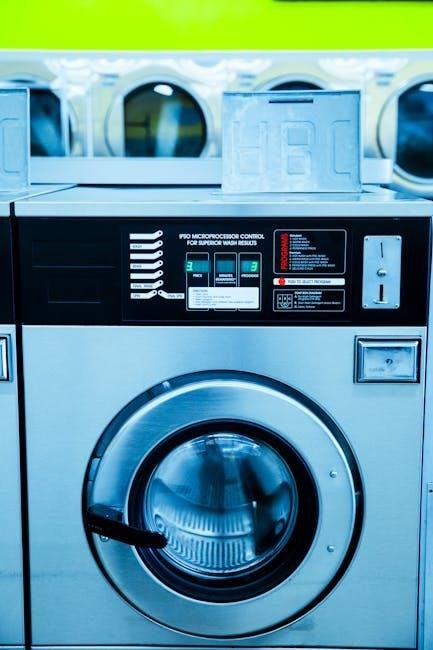
Maintenance
Regular maintenance ensures optimal performance and extends the lifespan of your Ryobi 2700 PSI pressure washer. Check the oil level, clean or replace the filter, and inspect hoses for damage or leaks. Store the unit in a dry, cool place during off-seasons to prevent rust and damage. Always refer to the manual for specific maintenance schedules and procedures.
5.1 Regular Maintenance Tasks
Regular maintenance is essential to ensure the optimal performance and longevity of your Ryobi 2700 PSI pressure washer. Begin by checking the oil level before each use and refilling as needed with the recommended oil type. Inspect the fuel filter and replace it every 50 hours of operation or as specified in the manual. Clean or replace the air filter to maintain proper engine airflow. Check the high-pressure hose and nozzles for any signs of wear, cracks, or blockages, and replace them if necessary. Lubricate moving parts, such as the spray wand and pump connections, to prevent corrosion and ensure smooth operation. Additionally, inspect the pump for any leaks or damage and clean the inlet screen to ensure proper water flow. Always follow the manufacturer’s recommendations for replacement parts and maintenance schedules to keep your pressure washer running efficiently. Regular upkeep will help prevent costly repairs and extend the life of your unit.
5.2 Storing the Pressure Washer
Proper storage of your Ryobi 2700 PSI pressure washer is crucial to maintain its performance and longevity. Before storing, drain all fuel from the tank and run the engine until it stops to prevent residual fuel from causing issues. Similarly, drain the water from the hose and pump to avoid freezing damage in colder climates. Clean the entire unit, removing dirt and debris that could corrode or damage components. Store the pressure washer in a dry, well-ventilated area, away from direct sunlight and extreme temperatures. Use a protective cover to shield it from dust and moisture; Ensure the unit is stored upright to prevent oil leakage. For extended storage, consider following the winterization steps outlined in the manual. Always refer to the manufacturer’s guidelines for specific storage recommendations to ensure your pressure washer remains in optimal condition for future use.
5.3 Winterizing the Unit
Winterizing your Ryobi 2700 PSI pressure washer is essential to protect it from freezing temperatures and ensure it operates efficiently in the spring. Start by draining all fuel from the tank and adding a fuel stabilizer to prevent degradation. Next, locate the water drain valve on the pump and open it to drain all water from the system. Use a garden hose to flush out any remaining water from the hose and spray nozzle. Apply a pump saver or RV antifreeze to the pump inlet to protect it from freezing. Store the unit in a dry, protected area such as a garage or shed, away from direct exposure to harsh weather. Cover the pressure washer with a waterproof cover to shield it from dust and moisture. For prolonged storage, ensure all electrical components are dry and protected. This process ensures your pressure washer remains in excellent condition for the next season.
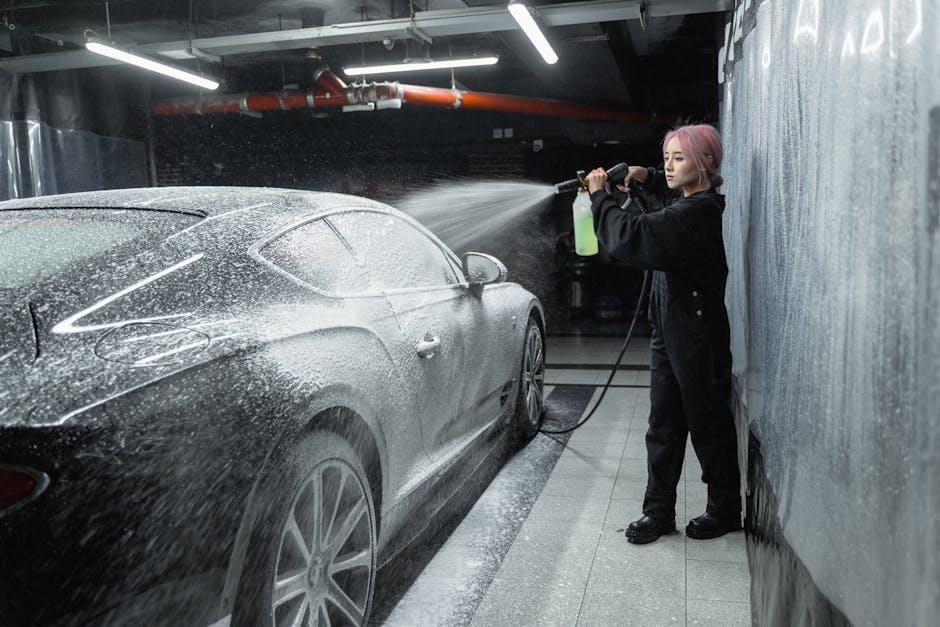
Additional Resources
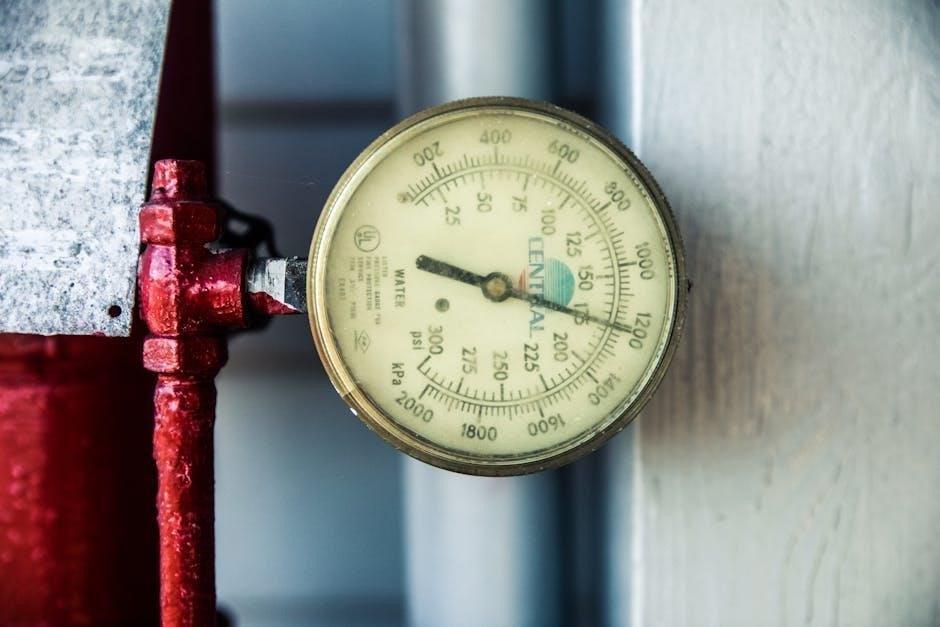
Troubleshooting
This section helps identify and resolve common issues with your Ryobi 2700 PSI pressure washer; Refer to the manual for specific problems and solutions. Contact customer support if issues persist.
